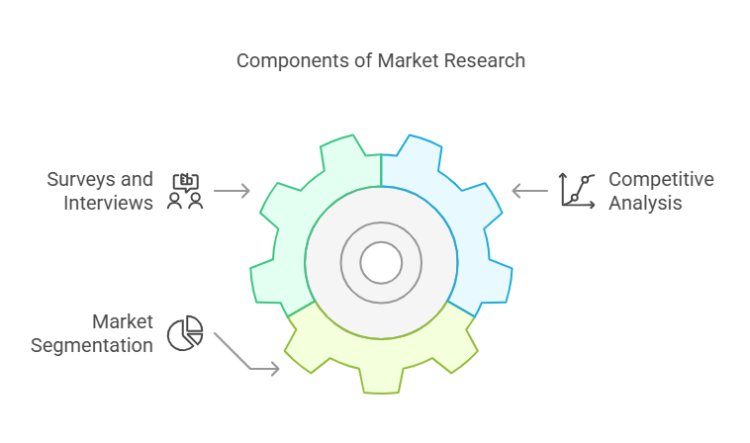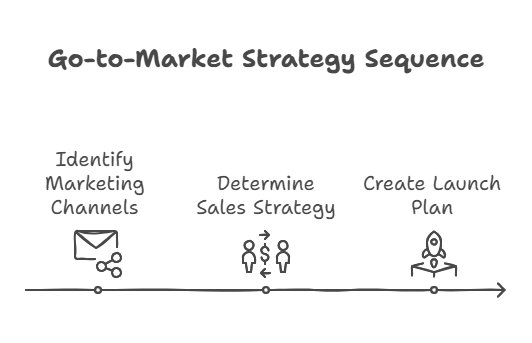Stages of Product Marketing: From Development to Promotion
Explore the key stages of product marketing, from market research and development to effective promotion for successful product launches.

In today’s fast-paced business environment, effective product marketing is crucial for the success of any new offering. From the initial concept to the final promotion, each stage of product marketing plays a vital role in ensuring that a product not only meets market needs but also stands out in a crowded marketplace. In this blog post, we will explore the key stages of product marketing, providing insights and strategies to help you navigate the journey from development to promotion.
1. Market Research and Analysis
Before diving into product development, it’s essential to conduct thorough market research. This stage involves understanding your target audience, identifying market trends, and analyzing competitors. Key activities include:

- Surveys and Interviews: Gather insights directly from potential customers to understand their needs, preferences, and pain points.
- Competitive Analysis: Study your competitors to identify their strengths and weaknesses, and find gaps in the market that your product can fill.
- Market Segmentation: Divide the market into distinct segments based on demographics, behaviors, or needs to tailor your marketing efforts effectively.
2. Product Development
Once you have a clear understanding of the market, it’s time to move on to product development. This stage involves designing and creating the product based on the insights gathered during the research phase. Key considerations include:
- Prototyping: Develop a prototype or minimum viable product (MVP) to test your concept and gather feedback.
- User Testing: Conduct usability tests with real users to identify any issues and refine the product before launch.
- Iterative Development: Use an agile approach to continuously improve the product based on user feedback and market changes.
3. Positioning and Messaging
With a finalized product in hand, the next step is to define its positioning and messaging. This stage is crucial for differentiating your product in the market. Key activities include:
- Value Proposition: Clearly articulate the unique benefits and features of your product that solve customer problems.
- Brand Messaging: Develop a consistent brand voice and messaging that resonates with your target audience.
- Positioning Statement: Create a positioning statement that succinctly communicates your product’s place in the market relative to competitors.
4. Go-to-Market Strategy
A well-defined go-to-market (GTM) strategy is essential for a successful product launch. This stage involves planning how you will introduce your product to the market and reach your target audience. Key components include:

- Marketing Channels: Identify the most effective channels for reaching your audience, such as social media, email marketing, content marketing, and paid advertising.
- Sales Strategy: Determine how you will sell your product, whether through direct sales, partnerships, or online platforms.
- Launch Plan: Create a detailed launch plan that outlines timelines, responsibilities, and promotional activities leading up to the launch.
5. Promotion and Marketing
Once your product is ready to hit the market, it’s time to execute your promotional strategy. This stage focuses on generating awareness and driving sales. Key tactics include:
- Content Marketing: Create valuable content that educates your audience about your product and its benefits.
- Social Media Campaigns: Leverage social media platforms to engage with your audience, share updates, and promote your product.
- Influencer Partnerships: Collaborate with influencers in your industry to reach a wider audience and build credibility.
6. Post-Launch Evaluation
After the product launch, it’s important to evaluate its performance and gather feedback. This stage helps you understand what worked, what didn’t, and how you can improve. Key activities include:
- Sales Analysis: Monitor sales data to assess the product’s performance against your goals.
- Customer Feedback: Collect feedback from customers to identify areas for improvement and potential new features.
- Market Trends: Stay informed about market trends and competitor activities to adapt your strategy as needed.
Conclusion
Navigating the stages of product marketing requires careful planning, execution, and evaluation. By following these steps—from market research and product development to promotion and post-launch evaluation—you can increase the chances of your product’s success in the marketplace. Remember, effective product marketing is not just about launching a product; it’s about creating a solution that resonates with your audience and meets their needs. With the right strategies in place, you can turn your product vision into reality and achieve lasting success.
What's Your Reaction?

















